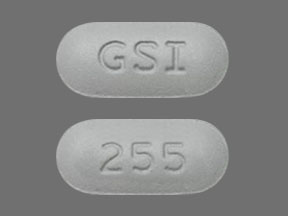Emtricitabine/rilpivirine/tenofovir alafenamide and Alcohol/Food Interactions
There are 2 alcohol/food/lifestyle interactions with emtricitabine / rilpivirine / tenofovir alafenamide.
Rilpivirine Food/Lifestyle
Moderate Food Interaction
GENERALLY AVOID: Coadministration with grapefruit or grapefruit juice may increase the plasma concentrations of rilpivirine. The proposed mechanism is inhibition of CYP450 3A4-mediated first-pass metabolism in the gut wall induced by certain compounds present in grapefruit. In 15 study subjects given rilpivirine (150 mg once daily) with the potent CYP450 3A4 inhibitor ketoconazole (400 mg once daily), mean rilpivirine peak plasma concentration (Cmax), systemic exposure (AUC) and trough plasma concentration (Cmin) were increased by 30%, 49% and 76%, respectively. In 16 study subjects given a single 500 mg dose of a less potent CYP450 3A4 inhibitor chlorzoxazone two hours after rilpivirine (150 mg once daily), mean rilpivirine Cmax, AUC, and Cmin were increased by 17%, 25%, and 18%, respectively. Because grapefruit juice inhibits primarily intestinal rather than hepatic CYP450 3A4, the magnitude of interaction is greatest for those drugs that undergo significant presystemic metabolism by CYP450 3A4 (i.e., drugs with low oral bioavailability). In general, the effect of grapefruit juice is concentration-, dose- and preparation-dependent, and can vary widely among brands. Certain preparations of grapefruit juice (e.g., high dose, double strength) have sometimes demonstrated potent inhibition of CYP450 3A4, while other preparations (e.g., low dose, single strength) have typically demonstrated moderate inhibition. Pharmacokinetic interactions involving grapefruit juice are also subject to a high degree of interpatient variability, thus the extent to which a given patient may be affected is difficult to predict.
ADJUST DOSING INTERVAL: The administration of rilpivirine in a fasting state may decrease its oral absorption. Under fasted conditions, the systemic exposure to rilpivirine was 40% lower compared to normal or high-fat caloric meals (533 to 928 Kcal). The systemic exposure was 50% lower when rilpivirine was taken with a protein-rich nutritional beverage.
MANAGEMENT: Coadministration of grapefruit or grapefruit juice with rilpivirine should preferably be avoided. For optimal absorption, it is recommended to take rilpivirine on a regular schedule with a meal.
References (2)
- (2011) "Product Information. Edurant (rilpivirine)." Tibotec Pharmaceuticals
- Cerner Multum, Inc. (2015) "Canadian Product Information."
Tenofovir Food/Lifestyle
Minor Food Interaction
Food enhances the oral absorption and bioavailability of tenofovir, the active entity of tenofovir disoproxil fumarate. According to the product labeling, administration of the drug following a high-fat meal increased the mean peak plasma concentration (Cmax) and area under the concentration-time curve (AUC) of tenofovir by approximately 14% and 40%, respectively, compared to administration in the fasting state. However, administration with a light meal did not significantly affect the pharmacokinetics of tenofovir compared to administration in the fasting state. Food delays the time to reach tenofovir Cmax by approximately 1 hour. Tenofovir disoproxil fumarate may be administered without regard to meals.
References (1)
- (2001) "Product Information. Viread (tenofovir)." Gilead Sciences
Switch to consumer interaction data
Emtricitabine/rilpivirine/tenofovir alafenamide drug interactions
There are 573 drug interactions with emtricitabine / rilpivirine / tenofovir alafenamide.
Emtricitabine/rilpivirine/tenofovir alafenamide disease interactions
There are 10 disease interactions with emtricitabine / rilpivirine / tenofovir alafenamide which include:
- hepatitis B
- hepatotoxicity
- hemodialysis
- renal dysfunction
- depression
- liver impairment
- renal impairment
- bone toxicity
- liver disease
- renal dysfunction
More about emtricitabine / rilpivirine / tenofovir alafenamide
- emtricitabine/rilpivirine/tenofovir alafenamide consumer information
- Check interactions
- Compare alternatives
- Pricing & coupons
- Reviews (10)
- Side effects
- Dosage information
- During pregnancy
- Drug class: antiviral combinations
Related treatment guides
Drug Interaction Classification
| Highly clinically significant. Avoid combinations; the risk of the interaction outweighs the benefit. | |
| Moderately clinically significant. Usually avoid combinations; use it only under special circumstances. | |
| Minimally clinically significant. Minimize risk; assess risk and consider an alternative drug, take steps to circumvent the interaction risk and/or institute a monitoring plan. | |
| No interaction information available. |
See also:
Further information
Always consult your healthcare provider to ensure the information displayed on this page applies to your personal circumstances.


